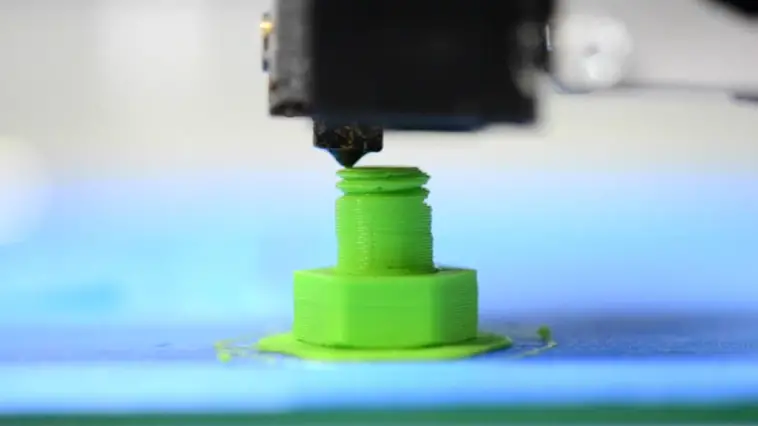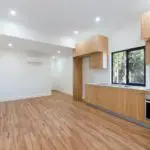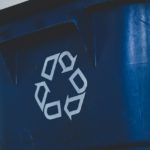What is ABS?
A thermoplastic called ABS is made of acrylonitrile, butadiene, and styrene. It is lightweight, has excellent heat and impact resistance, and has qualities that are good for electrical insulation. One of the most widely used extruded and injection molded plastics worldwide is thermoplastic because it can be heated and reused multiple times without losing its qualities.
Most household items are manufactured of ABS because it is so widely used. Typical ABS products include:
- Computer Keyboards
- Common home appliances
- Electrical outlets
- Toys for kids like LEGO bricks
What is ABS Filament?
In the early days of 3-dimensional printing, ABS and PLA were the first two materials that consumers could purchase (Polylactic acid). ABS filament has remained a preferred option because-
- Inexpensive
- Useful material characteristics
- Easy post-processing capability
Various colors and 1.75mm and 2.85mm diameters of ABS filament are now offered for 3D printers. Commonly, ABS filament is blended with additional substances to produce composite 3D printer filaments, such as carbon-fiber enhanced ABS and flame retardant ABS.
Uses of ABS filament
Prototypes
Prototypes of ABS Filament: Image Source: 3dhubs.com
ABS plastic is a popular material for professional prototyping since it is inexpensive and has excellent mechanical qualities. It can print the production prototypes in the same material as the end product, enabling accurate prototypes that feel and function like the finished product. Professionals can save time and money by producing precise prototypes quickly before tooling and production, which helps them avoid costly mistakes.
Processability
ABS is simple to process afterward. With the help of ordinary home chemicals like acetone, it may be drilled, sanded, and even chemically glued together. These leftovers can even be turned into ABS glue by being dissolved in acetone to create an ABS slurry.
Unlike other materials, which are often only able to be joined mechanically, ABS may also be joined chemically using acetone. To accomplish this, apply a thin coat of acetone to two ABS surfaces before pressing them together. Compared to conventional adhesives, the resulting bond, which fuses the two components, provides a stronger binding. This permits big assemblies, made up of numerous smaller ABS pieces, to be fused.
Impact-resisting Components
Due to its excellent impact resistance and average heat resistance (softening at about 100°C), ABS has become a popular choice for functional parts. For functional pieces that must survive repeated impact loads, ABS is the perfect material for 3D printing. The phthalate-free ABS mixes can even be used in aquatic and hydroponic applications.
Polished and Smooth Parts
ABS may be chemically polished with acetone vapors to create a shiny gloss surface finish since it can dissolve in acetone. In this method, polished pieces with barely detectable layer lines can be created.
Is ABS filament safe for 3D printing?
In its solid state, ABS is harmless. ABS is reported to release more than 175 volatile organic compounds (VOCs) and ultrafine particles (UFPs) when it melts, which can be harmful to human health. These include substances known to cause cancer, such as styrene and methylene chloride.
Unfortunately, ABS is also heated to high temperatures during the 3D printing process. Therefore, it is crucial to take the proper safety measures when printing in ABS to reduce and avoid exposure to these dangerous pollutants.
Advantages of ABS Filament for 3D Printing
Here are a few advantages of 3D printing with ABS material.
Excellent mechanical qualities
The substance ABS is reputed to be tough and long-lasting. It is heat and common chemicals-resistant. Compared to other 3D printing materials, it is also more resilient to pressure, heat, and stress. For this reason, ABS is an excellent material for 3D printing intended for “wear and tear.”
Obtain successful outcomes
When utilizing ABS filament, you will achieve good results as long as the settings are correct. Even overhangs of about 45 degrees are possible to print on this material. Compared to other filaments, this filament gives models a smoother finish with fewer oozes and strings.
Simple to process
Acetone and adhesive are simple processes for ABS material. You may also file away part of the materials and paint it with acrylic colors.
Printing ABS Without Warping
Enclosure
ABS has a high rate of shrinkage and must be printed at high temperatures. The cooled portions of the print will begin to contract if the 3D print’s temperature dips while it is being created. As a result, there are print quality difficulties like warping and curling.
It is best to maintain an ABS print continuously above a particular temperature to avoid this problem. For this, a 3D printer enclosure is perfect.
A heated chamber or box that surrounds your 3D printer, known as an enclosure, helps to maintain the temperature of your ABS print while it is being printed. Temperature instability can occur without an enclosure due to cooler air gusts.
From straightforward boxes to intricate chambers with in-built heaters, numerous types of enclosures are on the market. The simplest option is to purchase an enclosed 3D printer already built to order, but you can also create your own enclosure for a 3D printer.
There are a few considerations to make if you want to construct your own enclosure. The enclosure must not be flammable and be big enough to hold your 3D printer. Additionally, it needs to be well-insulated to keep the temperature steady.
Print Bed Material
While you may print ABS on various surfaces, printing directly onto a piece of glass linked to your heated bed produces the best and most reliable results. Your parts’ bottoms have a flat surface thanks to the smooth glass, which effectively diffuses heat.
A thin coating of glue or melted ABS placed across the build plate is ideal for a glass print surface. As long as the heated bed temperature is constant, a PVA glue stick will typically be sufficient to keep the majority of prints attached to an even printing bed.
Bed Adhesion
Warping in ABS prints can be avoided by achieving first-layer adhesion, which is crucial but also challenging. One of the simplest ways to guarantee a strong bond with the build plate during printing is by applying a suitable adhesive on the bed. There are numerous techniques to achieve good bed adhesion.
ABS slurry is typically considered the best bed adhesive for 3D printing using ABS filament. You may create this on your own, resulting in a strong adhesion between your initial layer and the print bed. ABS material is dissolved in acetone to create an ABS slurry. It can be produced by chopping up leftover ABS bits and allowing them to dissolve in acetone.
How strong is ABS Filament?
Due to its mechanical characteristics, ABS is a better material for practical applications. Hard specifications reveal that ABS has a lower ultimate strength of 40 MPa than PLA, which can endure roughly 65 MPa before breaking.
However, ABS can withstand impact and shock far better. As an ABS part has a propensity to bend and absorb strain, it can be stronger against breakage.
Additionally, ABS is ideal for outdoor applications due to its higher temperature tolerance. Compared to ABS, PLA is more prone to deformation and melting at temperatures around 60 °C, while ABS can withstand temperatures up to 98 °C.
Best 3D Modeling and Printing Software – “SelfCAD”
SelfCAD is a free online and downloadable 3D modeling program for beginners and specialists in 3D printing. This 3D printing program has an easy-to-use user interface. Only the most used functions are included, with the average number of tools considerably reduced compared to competing programs. SelfCAD tools are simple to learn and most of which may be reused. In other words, you may execute multiple tasks with a single device. The only 3D modeling program that integrates technical, artistic, rendering, and 3D printing capabilities into one tool is SelfCAD!
In many aspects, SelfCAD is prepared for 3D printing. The model’s geometry is ensured to be error-free by the Magic Fix Tool. Slicing your models and creating G-Code for your 3D printer are made simple by an in-built slicer. It is the most economical and professional 3D printing equipment for novices and specialists.
Conclusion:
ABS is a substance with distinctive properties and a wide range of potential applications. However, ABS 3D printing might be complex due to the unique properties of the material. Before printing, it is crucial to comprehend the capabilities and limitations of ABS. We hope that after reading this guide, you will be successful in producing your 3D-printed ABS parts.





